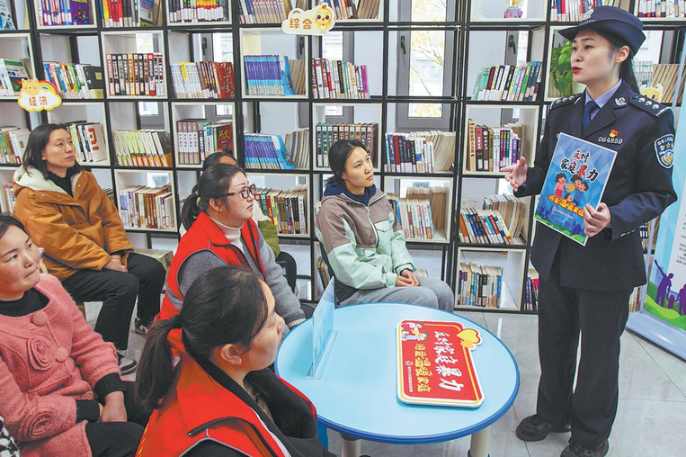Uygur embroiderer keeps Hami heritage alive by embracing modern trends
China Daily | Updated: 2019-08-05 09:42

URUMQI - When Kader Rahman, a member of the Uygur ethnic group, sits down to transform silken strands of colored thread into beautiful flowers, he enters a true state of flow.
"These are my favorite moments of the day. Embroidery makes all my troubles melt away, and I am oblivious to everything going on around me," Kader, 46, said in his studio in Qiaomaizhuangzi village, Hami, in northwestern China's Xinjiang Uygur autonomous region.
When he is sewing, it is hard to imagine his agile hands once tended crops in his former life as a farmer. Today, he is a different type of guardian as he helps to preserve Xinjiang's only State-protected intangible cultural heritage - the art of Hami embroidery.
Hami was an important post on the ancient Silk Road and the city absorbed cultures from the East and West, creating a cultural patchwork that has influenced the patterns and colors used by Hami embroiderers.
"Hami embroidery features classic Han designs, such as peony, fingered citron, lotus, chrysanthemum and plum blossom, coupled with distinctive motifs unique to the area," said Cui Jianbing, head of the Hami Cultural Center.
Kader was taught simple embroidery pattern design and paper cutting by the women of his family when he was 7. His talent was noticed by his mother and sister, both locally renowned embroiderers, and they would use his paper cuttings as inspiration for their own work.
Little Kader, concerned about being caught doing a "woman's job", used to hide when he studied embroidery.
Every year, as a gift to mark Eid al-Fitr, the three-day holiday marking the end of the Islamic holy month of Ramadan, Kader's sister, Ayihan Rahman, would embroider a floral skull cap for her father. In 2007, Ayihan died suddenly, leaving the family heartbroken. The first year without his sister, near the end of Eid al-Fitr, Kader came home from tending his fields to find his mother, Xirenhan Hoja, sewing a cap as tears ran down her lined face.
He took the needle from his mother's hands and began to sew.
"I knew how much she missed my sister - her daughter. So I told her, I can continue this tradition," he said. "The first skull cap I made might not have been all that pretty, but my mom seemed happy. From then on, needle in hand, I've carried on my sister's legacy."
His skills continued to improve and they caught the attention of his female peers, with many approaching him to ask if they could use his patterns.
In 2016, a Hami-style embroidery workshop was set up by Artron, a Chinese art company, and Tsinghua University's Academy of Arts and Design. Subsequent government aid, in the form of interest-free loans and other support, has led to the establishment of 230 more companies and cooperatives. There are now more than 5,000 professional embroiderers in Hami.
Kader has become secretarygeneral of Hami's embroidery association and has traveled extensively across the country to learn about different styles of embroidery. The wealth of knowledge and experience that he returned with has helped him plan many of the association's embroidery workshops.
He has also established a cooperative with over 100 village artisans who can make 300 varieties of embroidery, including cellphone cases, cushions, caps and qipao - a traditional women's costume - all featuring his own designs.
"By blending ancestral embroidery practices with modern trends, the younger generations are being exposed to authentic craftsmanship," said Cheng Xiuming, director of Artron's e-commerce product department.
Kader said: "Many people love my designs. They like the flowers we stitch. This love for the craft of the Hami people gives me a feeling - like a beautiful flower blooming in my heart."
Xinhua
























